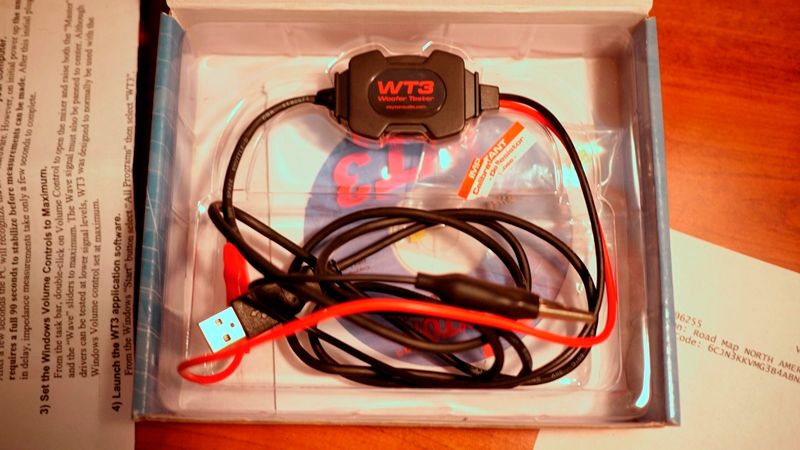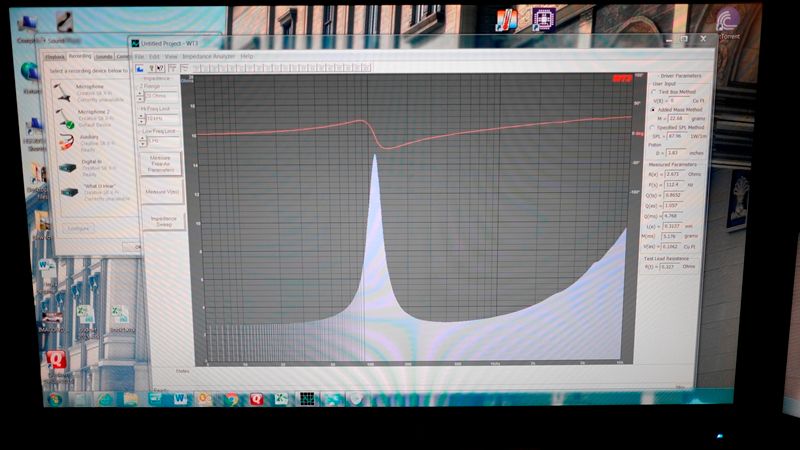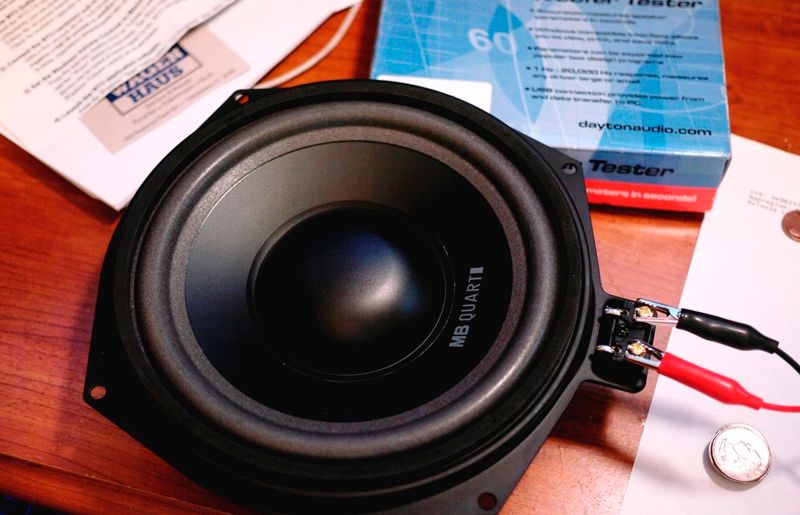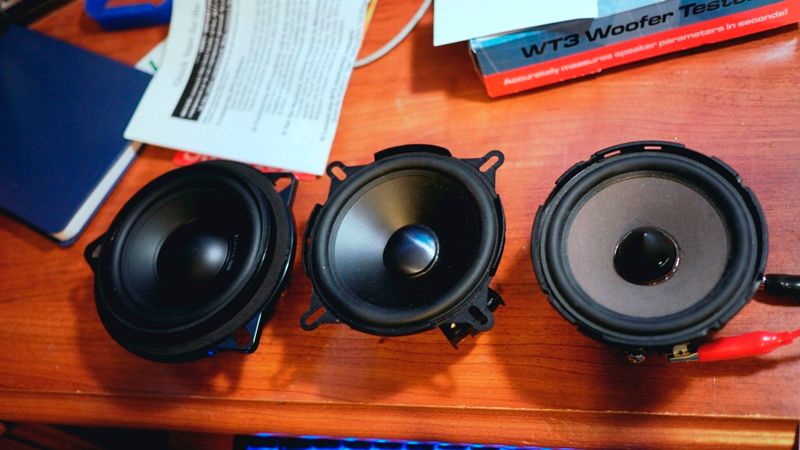My car came with the base stereo which only has a 4-inch in the door and a 6.5” under the seat (also a 4” in rear deck). Upon removing the 6-incher I wanted to see what its specs were.
Several years ago I bought a device that allows one to do some rudimentary testing of drivers called a Dayton Audio WT3. This device connects via USB to a computer and evaluates the speakers inside the software. While you’d think every speaker produced by a company would be identical within a model and speaker line. The truth is that because of a variety of nuances individual speaker specs can differ by a small percentage.

I use to make my own home speakers and used this to get accurate measurements of a driver so I could design crossover networks more accurately, but that is a different story.

I first measured the oem woofer and found that as I suspected it was designed to play frequencies much higher than one would ask a subwoofer to play. The numbers I was interested in was the F(s), or Driver free air resonance and the Drivers and the Sensitivity of the speaker measured in SPL.

The F(s) is the point at which all the moving parts of the driver sympathize or resonate. Resonance is a hard thing to explain simply, but a rule of thump is that you will find it hard to produce lower frequencies than the driver’s fs. So a driver with an f(s) of 60 Hz will not produce 35 Hz very well. A driver with an f(s) of 32 Hz will produce 35 Hz, if the box is tuned low enough.
The SPL sensitivity refers to a measure of how loudly the speaker will play given a certain electrical input level and is measured in dB’s. The numbers we are using is roughly equivalent to the output you’ll get by placing a microphone 1 meter away from the speaker to measure the sound output (in decibels) with 1 watt of sound played through it.
Another important measurement is Qt(s). Q as it is referred as, is basically a describing word, it is used to describe a quality or characteristic about an electrical or mechanical part of the driver. So Qt(s) is the overall Q of the driver, both electrical and mechanical. Qt(s) can be thought of as how strong the motor and magnet system are. A driver with a low Qt(s) of around 0.20 would have a large magnet and be able to move the cone with a lot of force. This makes for a tight driver. A driver with a Qt(s) of 0.45 would have a smaller magnet and less control over its cone.
Here is where the value of Q is important and will help us figure out what is best in our cars. Low values of Qt(s) give a tight and punchy sound but with little weight or low bass and high Qt(s) values give a slow and heavy sound that will give you lots of low frequency output. Watch out for drivers with really high Qt(s) values of 0.6 or above, these would require such a big box to work correctly that in normal size boxes you don’t get much low end. They are better of being used on the rear parcel shelf of your car, where they can enjoy a massive rear chamber.
Here are the specs for the two speakers we measured:
OEM BMW under seat woofer
F(s)= 63.25
Qts=.8393
Vas=.9565
SPL=89.83 dB
MB Quart QM200BMW 8-inch woofer
F(s)= 56
Qts=.9747
Vas=.1536
SPL=84.4 dB
In comparing the two drivers we first look at the SPL numbers and one could say, not surprisingly that the BMW driver is more efficient than the BMW. The 90dB rating (89.93 rounded up) vs. the 84 dB of the Quart, means that you will need less power to make the BMW speaker play as loud as the Quart. With the BMW speaker only seeing a small amount of power from the oem headunit this explains how you get so much sound out of the little speaker.

With the Quart the lower and rather disappointing SPL rating means that it will require a whole heck of a lot of power to make it sound really good. Even though we are going to use an external amplifier on these, I would have hoped to have a high sensitivity on these. Strike-one for the MB Quarts.
If you’ve spent any time looking at the oem system in the Beemer, then you know the little enclosure these speaker sit in are tiny. The Qt(s) number implies that both would need a box five times larger than what could fit under the seat to play well, not to mention I would use the term box very loosely when describing the cavity they sit in. Neither driver is designed to play very low and I doubt changing or designing a more suitable box, if we had the space would benefit them much.
The F(s) of the two drivers basically shows us that they are midrange or mid-woofers more than subs. The Quart can play a little lower than the BMW speaker, but not by much. Leaving me wondering what other options are out there?
With this information, I will do some more research and see what other options are out there. I know Focal makes a direct fit 8-inch, as does Earthquake in their SWS series. The challenge will be finding a driver for a reasonable price and getting anything to sound good in the oem enclosure.
For now, I intend on eventually adding an amplifier along with upgrading the door speakers. Since I have the Quarts and do not want to have to pull the seat again, I will go ahead and install them for now with the expectation that they will not be as loud or even “hit” as hard as the OEM 6.5-ncher as long as I have them connected to the oem headunit. But I suspect once I add my amp and get 50-80watts going to each one, it will make a difference.
In my next couple of post I will go ahead and install them and work through the next phases of my install. In addition take a look at the 4-inch midrange that comes with the oem system, versus the one that comes with the MB Quart BMW system. I also have a few other MB Quart midrange speakers that I am considering using. I will evaluate them all to see which offer the best potential sound.
